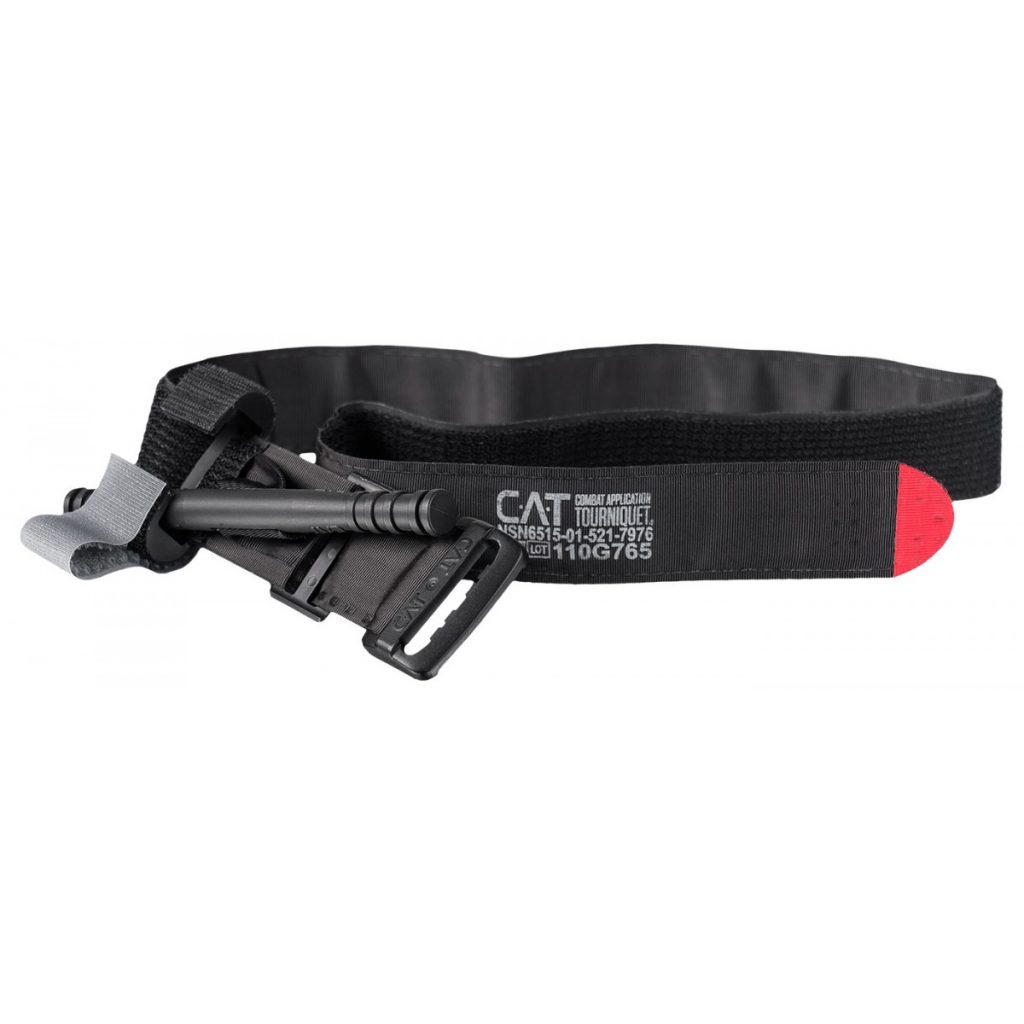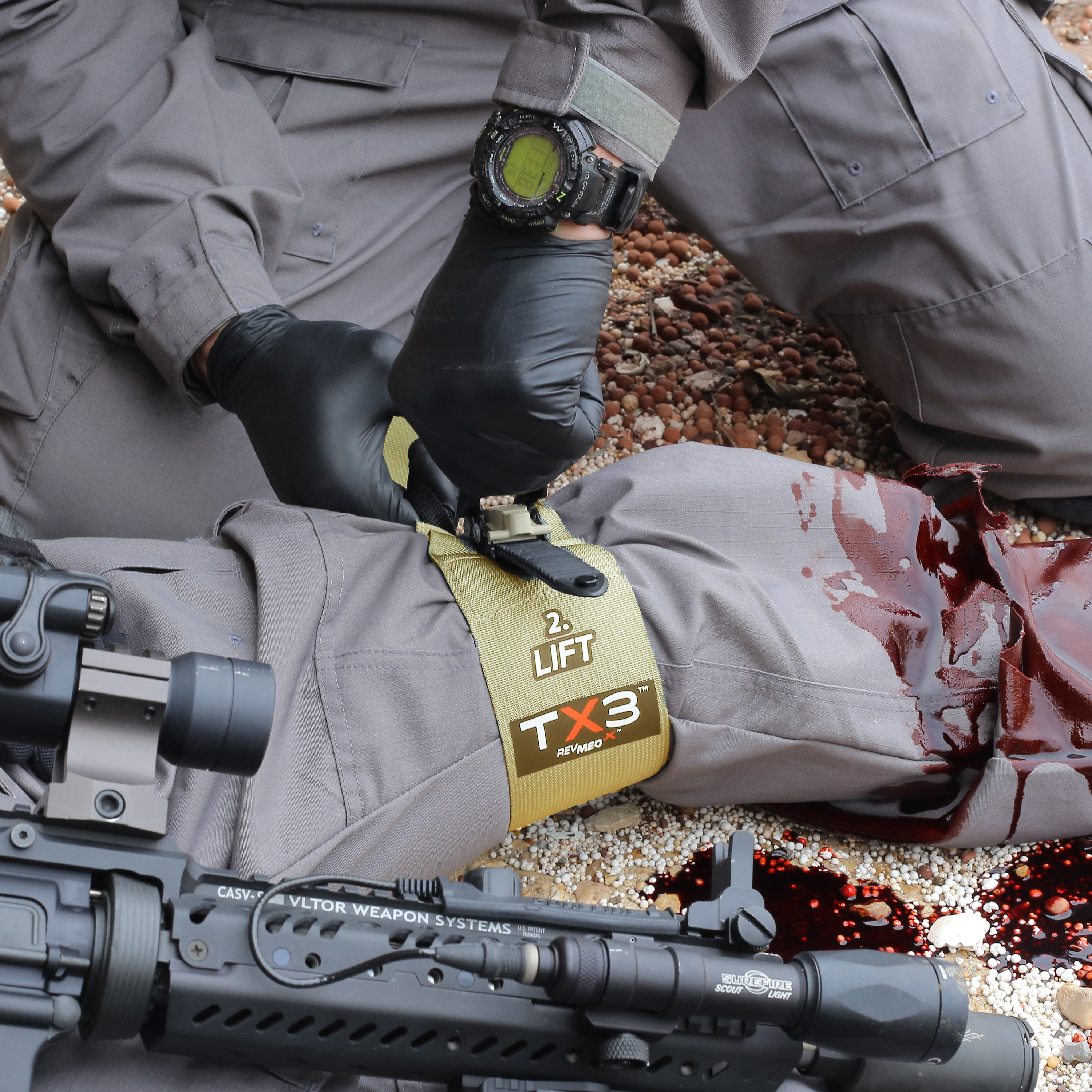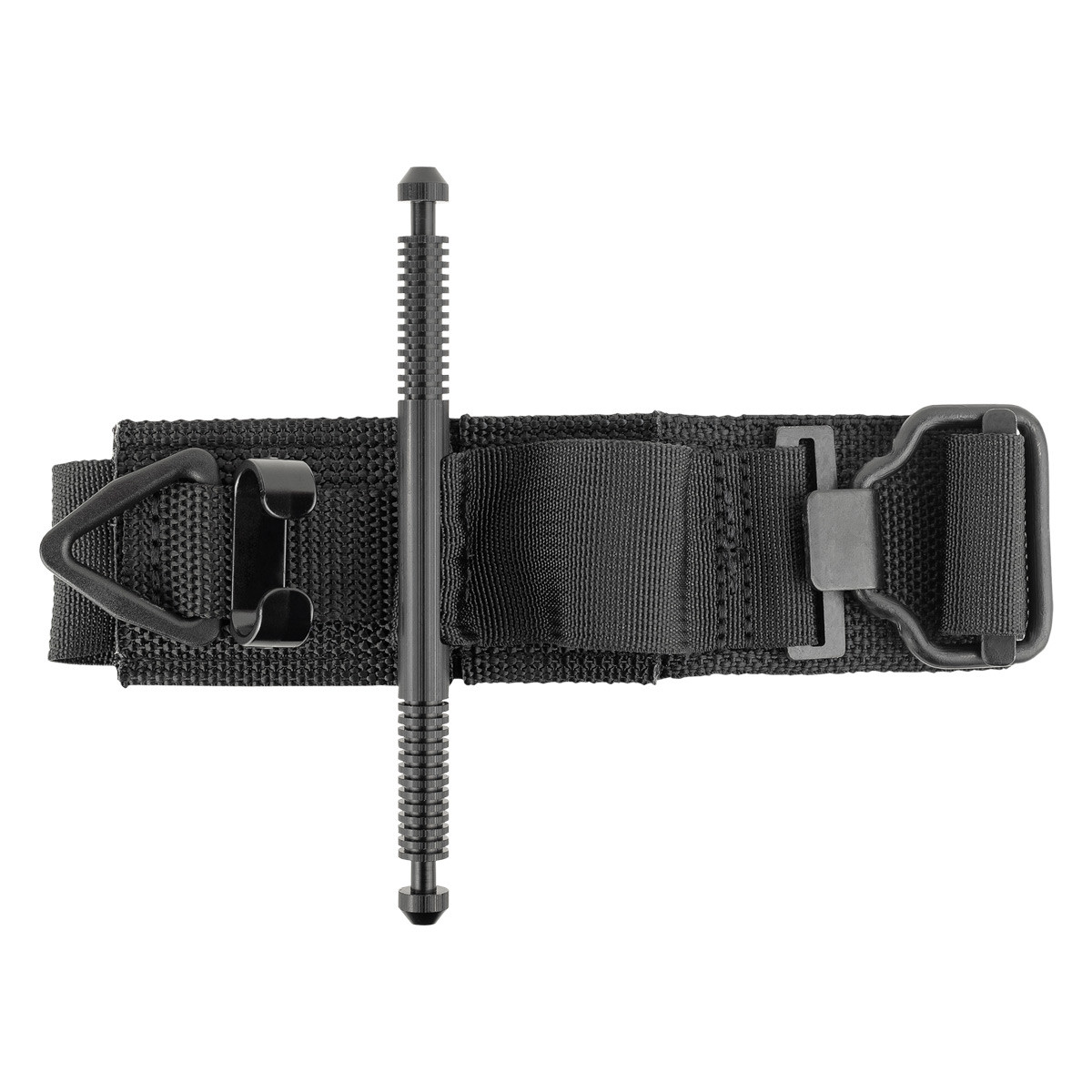Approved for Combat: The TX2 Tourniquet by Rev Med X

The CAT Tourniquet by North American Rescue has long been the king of trauma medicine. A large reason for this has been the Committee on Tactical Combat Casualty Care (CoTCCC) approving it as an acceptable way to control massive bleeding in trauma patients on the battlefield.
CoTCCC is a government funded think tank made up of experienced nurses, doctors, and combat medics from all military branches, who evaluate the procedures of war medicine and release guidelines that are designed to improve the odds of survival from otherwise life-threatening wounds.
New companies are attempting to seek out a position of their own, challenge the king, and collect a portion of the market which the CAT has held with such a distinct lead. But to do that, they must first have their products vetted by the Committee.

Many companies send their TQs to the Committee for review, but few pass the rigorous standards to be approved.
A few years ago, CoTCCC has released new recommendations of TQs that they approve for use in combat. But few people are aware of the new tourniquets.
Rev Med X is one of the companies who have made it into this very short list of TQs with the innovative design of their TX2 Ratcheting Tourniquet.
I was sent a few of their TQs for review and I have a few thoughts that might help you decide if this is the TQ for you and your situation. No TQ is perfect and though the CAT is the most widely known, it still suffers from its own issues.
But when something as important as your life, or the life of a loved one is on the line, only the best will do.
Here are some of the pros and cons that I see with the TX2:
Pros:
- CoTCCC approved. This is a big deal. For a TQ company to gain ANY traction in the market, they need to first have their design given the nod by the Committee, which has strict standards that must be passed. A variety of tests are done to ensure the TQ will not only control bleeding, but will also stay in place when the casualty is transported through austere environments. The TX2 passed muster.
- The strap of the TX2 is .5 inches wider than either the CAT or SOF-T Wide making it a more comfortable TQ for the casualty. TQ pain is a common complaint from Casualties, so this is a nice advantage, but not a requirement for saving lives. The primary advantage of this wider the strap, is because it’s easier to gain full occlusion of the bleeding artery because of the surface area being compressed is larger.
- No slip ratcheting mechanism. I like this because a windlass style TQ (CAT) can slip out of your hands if you are bloody, or weak from blood loss and unwind, requiring you to retighten it. With the rachet system used by the TX2, there is no chance of this happening.
- According to the Rev Med X website:
“Durable construction allows repeated use in training without loss of function.”
This is different than other TQs on the market which do not recommend training with the one you are planning to save a life with since the materials can weaken with use and could become less effective over time. With how often I harp on the necessity of training, I feel like this is a pretty big deal. Instead of needing to purchase two CATs (one for use and another for training), you would only need to purchase a single TX2 and still be able to train effectively.

Cons:
- It’s bigger than either the CAT or SOF-T. This might not be an issue for you, but if you have a limited capacity for carrying things, you might run out of space. Especially if you want to carry more than one like a medic would. If you are running an ambulance rig with plenty of drawers and cabinets to store gear, then this probably doesn’t mean much to you.
- It’s a harder to apply one handed. If you are thinking about purchasing this TQ so you can treat your own wounds, this might not be the best choice for you. It’s certainly not impossible, but you must practice on occasion to ensure you could do it quickly. But this is true for all tourniquets. Additionally, if you needed to disconnect the TQ in order to apply to a trapped limb, like in a car accident where you cannot loop the TQ over the limb, it will be difficult to thread the strap through the buckle, especially one handed.
- It’s more expensive. The TX2 retails on the Rev Med X website for $38.95, compared to the cost of a CAT ($29.99), or the SOF-T Wide ($29.23). If you’re on a budget, there are cheaper, quality TQs that will work just fine for you.
Ultimately, the cons that I have with the TX2 are minor ones, and with the approval of the CoTCCC, I am confident it will perform well, provided you have the training to back it up and you are well practiced with it’s application.
Mountain Man Medical does not currently sell Rev Med X products, so if you would like to purchase one for yourself, head over to their website and check them out.
We do sell both the CAT and the SOF-T Wide tourniquets, so if you would prefer those over the TX2, click here to purchase.
Get the training you need to save a life with our FREE online trauma course, and be ready, for whatever the Mountain throws at you.

